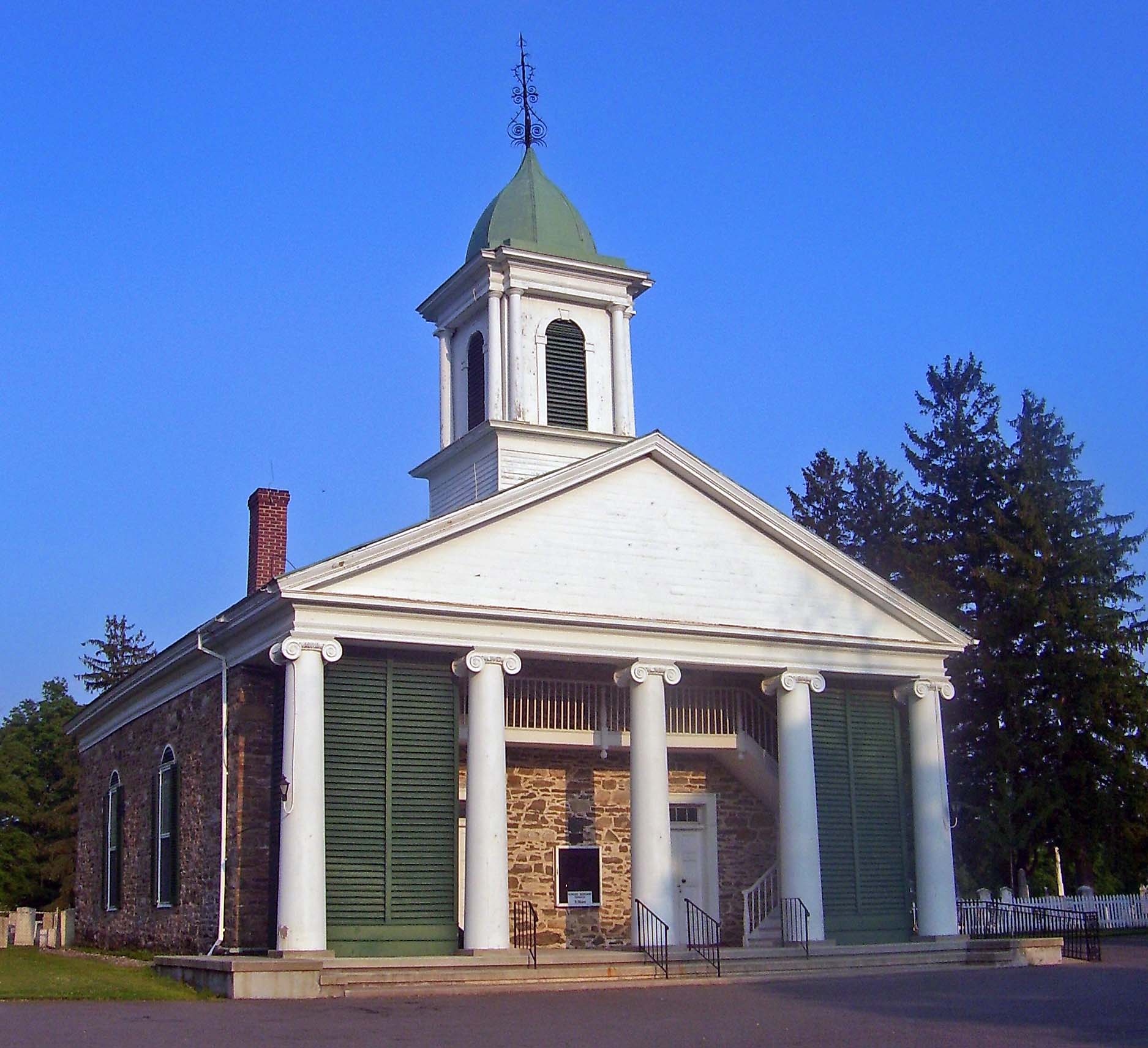- Reformed Church of Shawangunk
Infobox nrhp
name = Reformed Church of Shawangunk
nrhp_type =

caption = Main church building in 2007
location = Town of Shawangunk, NY
nearest_city = Newburgh
lat_degrees = 41
lat_minutes = 39
lat_seconds = 17
lat_direction = N
long_degrees = 74
long_minutes = 13
long_seconds = 04
long_direction = W
area =
built = 1755
architect =
architecture =
added = 1982
visitation_num =
visitation_year =
refnum = 82003408
mpsub =
governing_body = Private churchThe Reformed Church of Shawangunk is located along Hoagerburgh Road in the Bruynswick section of that town in Ulster County,New York ,USA . Perched above theShawangunk Kill , it enjoys a splendid view of the nearbyShawangunk Ridge . Built between 1752-55, it is the oldest building in continuous use among American congregations of theDutch Reformed Church .<cite web|url=http://www.shawangunkreformed.org/History.html|title=http://www.shawangunkreformed.org/History.html|accessdate=2007-08-09]It is on the
National Register of Historic Places , and has played a role in the development of the larger Reformed Church in the U.S. through some church leaders who began their careers there.History
There has been a congregation in the area since 1736, when five
baptism s were recorded. The Dutch, German andHuguenot settlers of the region went to Kingston to handle their religious affairs, but eventually the local population grew large enough that they desired a church closer to home. So, in 1751, Isaac Hasbrouck bought six acres (2.4 ha) on which to build a church.After the current
parsonage across the road was built, construction began on the church itself the following year when subscribers put up the money in return forpew s. Legend has it the workers had to first put up woodenstockade s to fend off hostile Indian attacks. The nearbycemetery saw its first burials that year, and the congregation was formally organized in 1753, with the Rev. Barent Vrooman serving as the firstpastor . He left after a year to be replaced by Johannes Goetschius in 1760.On
December 26 ,1755 , the pews were sold and the completed church formally opened. Goetschius served until his death in 1771 and was buried in the church, beneath what was then thepulpit . The building underwent its first serious renovations in the late 1790s, when the interior was rotated. The west windows became the doors and the pulpit was moved to the east wall, followed by a corresponding change in the orientation of the pews, and the parsonage's second story completed.In 1833-34 the five front
column s were added, in the then-popular Greek Revival style, to protect the doors. The original south entrance was finally sealed in 1881.A third building, a church hall to the west, was added to the church complex in 1916. It received a wing for modern
kitchen andbathroom functions in 1958, and another one to meet space needs in 1990. In 1982 the building was listed on the National Register as "Reformed Church of Shawangunk Complex", reflecting the historic importance of all the buildings and the cemetery.cite web|url=http://www.nr.nps.gov/iwisapi/explorer.dll?IWS_SCHEMA=NRIS1&IWS_LOGIN=1&IWS_REPORT=100000044|title=National Register of Historic Places listing|accessdate=2007-08-09]Legacy
Five other local Dutch Reformed Church congregations have been split off from the Shawangunk Reformed Church: New Hurley, New Prospect, Guilford, Wallkill and Gardiner. The New Hurley church is also on the National Register.
Two former pastors of the church have become President of the
Reformed Church in America : Ryniew Van Nest in the late 18th century and Charles Scott a century later. Scott left Shawangunk to accept a professorship atHope College in Holland,Michigan ; he would eventually serve as church president from 1881-92. He is buried in the church's cemetery.John Van Vleck, a former congregant who became a minister himself, helped establish Hope's forerunner, Holland Academy. Van Vleck Hall on campus is named for him. Abraham Wilson, another former pastor, left to fill the same position for the Reformed Church in Fairfield,
Illinois , the church's first congregation in what was then known as the West, in 1837.At least 143 men from the congregation fought in the Revolutionary War. Of those, 43 are buried in the cemetery.
References
External links
* [http://www.shawangunkreformed.org/ Church website]
Wikimedia Foundation. 2010.
